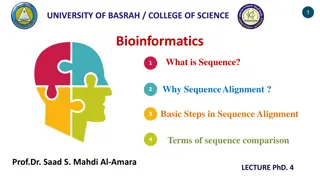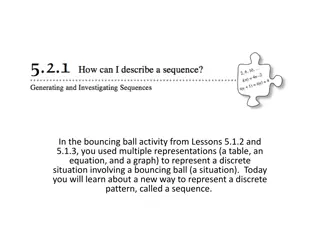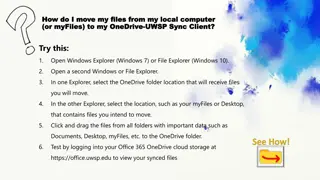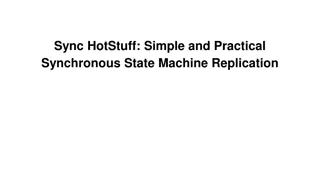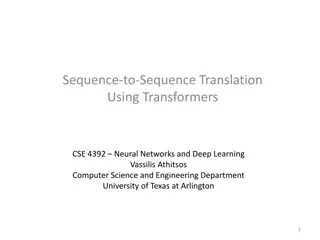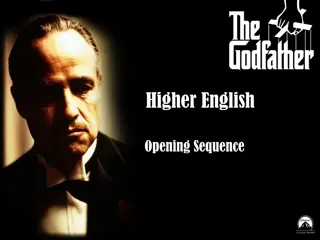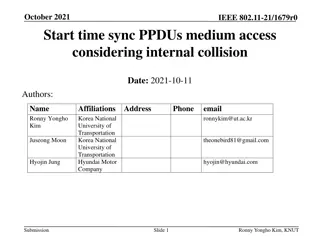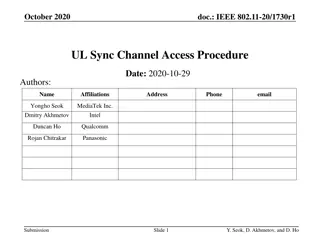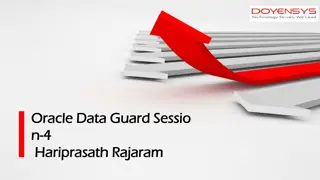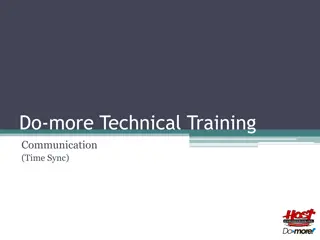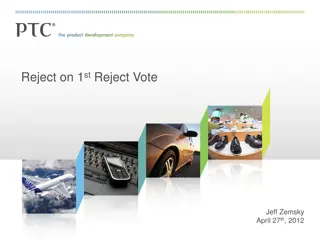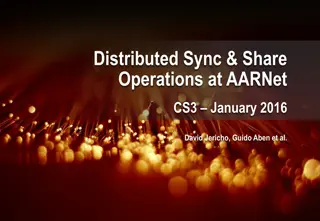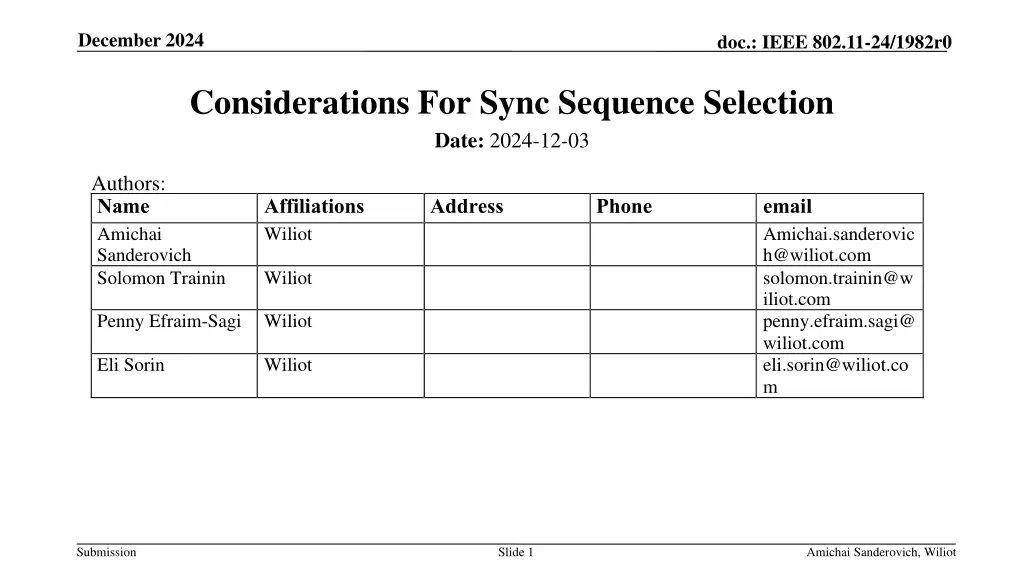
IEEE 802.11-24/1982r0 Sync Sequence Selection Considerations
Explore considerations for sync sequence selection in active transmitter AMP non-AP STA scenarios, focusing on avoiding miss-detection, early demodulation, timeouts, and false alarms in downlink communication. Learn about using PPDU formats for active and backscatter consumption and duty-cycle operation for energy efficiency.
Download Presentation

Please find below an Image/Link to download the presentation.
The content on the website is provided AS IS for your information and personal use only. It may not be sold, licensed, or shared on other websites without obtaining consent from the author. If you encounter any issues during the download, it is possible that the publisher has removed the file from their server.
You are allowed to download the files provided on this website for personal or commercial use, subject to the condition that they are used lawfully. All files are the property of their respective owners.
The content on the website is provided AS IS for your information and personal use only. It may not be sold, licensed, or shared on other websites without obtaining consent from the author.
E N D
Presentation Transcript
December 2024 doc.: IEEE 802.11-24/1982r0 Considerations For Sync Sequence Selection Date: 2024-12-03 Authors: Name Amichai Sanderovich Solomon Trainin Affiliations Wiliot Address Phone email Amichai.sanderovic h@wiliot.com solomon.trainin@w iliot.com penny.efraim.sagi@ wiliot.com eli.sorin@wiliot.co m Wiliot Penny Efraim-Sagi Wiliot Eli Sorin Wiliot Submission Slide 1 Amichai Sanderovich, Wiliot
December 2024 doc.: IEEE 802.11-24/1982r0 Abstract In this contribution we outline few considerations for downlink sync sequence selection, with focus on active transmitter AMP non-AP STA Submission Slide 2 Amichai Sanderovich, Wiliot
December 2024 doc.: IEEE 802.11-24/1982r0 Basic Metrics to Consider Miss-detection due to the sync: A device waked up and did not correctly synchronized to the transmitter, which caused modem reception errors Too early: side lobe of the sync sequence or over the legacy preambles or over the excitation field cause the receiver to demodulate too soon Timeout: Missed the transmitter timing, either the receiver started to demodulate too late or receiver decided it is a miss-detect and stopped False alarms not clear if should be filtered using the sync field or not. Other false alarm filters include: The preamble energy rise or duty cycle operation will prevent starting the receiver in the middle of data or frames. We think it is not power efficient to wake up using the sync sequence since it is relatively higher power component. Invalid SIG or MAC fields within false alarm event can be easily detected, with relatively low energy (even 5 bits are sufficient to get high reliability) and low impact. E.g. CRC/parity, backscatter/active, non-supported rate, non-supported length, non-supported mode. Timeout 20 15 Too early 10 5 0 -5 -10 0 5 10 15 20 25 30 Submission Slide 3 Amichai Sanderovich, Wiliot
December 2024 doc.: IEEE 802.11-24/1982r0 Downlink Sync Usage Active Devices From [1], we can use the following PPDU formats as example: DL for active DL for backscatter consumption Sync RX Power Demode Active - Sleep Since RX power consumption is not small, the receiver needs to use the preambles/exitation fields in order to detect energy rise for wakeup and sleep and save energy otherwise. Submission Slide 4 Amichai Sanderovich, Wiliot
December 2024 doc.: IEEE 802.11-24/1982r0 Downlink Sync Usage Active Devices [Cont.] In addition, [2] presented duty-cycle operation for AMP non-AP STA. In order to save energy, it is suggested that the receiver will not operate during the entire time, but just when duty cycle ON. RX states: ON Sleep First trigger will still need to be received with wake-up operation since TSF not synced yet. Submission Slide 5 Amichai Sanderovich, Wiliot
December 2024 doc.: IEEE 802.11-24/1982r0 Considerations For Downlink Sync Design [Cont.] On both scenarios from previous slides, it is not expected that active transmitter AMP non-AP STA needs to detect a sync field in order to startup the receiver. For duty-cycle, the receiver is open only when the transmitter is going to transmit For non duty cycle it is expected that receiver can use the legacy preamble in order to wakeup Backscatter receivers can wakeup on sync sequence. The sync for backscatter DL can appear after long exitation field, and thus requires also differentiation from data. It is expected to be able to detect and sync using very short sequence (e.g. short sequences). Submission Slide 6 Amichai Sanderovich, Wiliot
December 2024 doc.: IEEE 802.11-24/1982r0 Manchester-OOK sync vs OOK sync for Active Devices Data part is Manchester-OOK It is sufficient statistics to compare estimates E1 > E2 and E3 > E4 for optimal reception. No need to estimate SNR or Threshold. Manchester-OOK of the sync will enable reusing the Man-OOK demode for the receiption synchronizer Man-OOK demode with Man-OOK sequence has low SLL (same as OOK with OOK demode). Adding SNR estimation for online setting of the threshold for OOK can become the bottleneck of the whole reception (e.g. detecting transition) Submission Slide 7 Amichai Sanderovich, Wiliot
December 2024 doc.: IEEE 802.11-24/1982r0 Example for Man-OOK Sync Performance L=7 with OFDM L=8 with OFDM L=11 with OFDM L=16 SLL=1 with OFDM L=16 SLL=2 with OFDM L=16 SLL=3 with OFDM FER of 32bits 20 Example: 16 b = 64us for 256kbps Autocorrelation of 16b sequences 15 10 10-1 5 0 MD -5 10-2 -10 0 5 10 15 20 25 30 Low SLL is not sufficient for selection criteria Our analysis assumes timing correction adds 5dB to FER vs MD performance Suggestion: Join 16 bits Man-OOK sequence with an OOK sequence For example: 1 0 1 0 0 1 0 1 0 1 0 1 1 0 1 0 0 1 1 0 1 0 0 1 1 0 0 1 1 0 1 0 1 1 1 10-3 0 5 10 15 SNR [dB] Man-OOK OOK Submission Slide 8 Amichai Sanderovich, Wiliot
December 2024 doc.: IEEE 802.11-24/1982r0 Summary We suggest main objective of sync field for active devices is to synchronize the receiver to the timing of the transmitter For simplicity, we prefer same sync for 1Mbps/256Kbps active/backscatter and signal the rate in the SIG Our analysis indicated 16b Man-OOK sync is sufficient We prefer to relegate most of the false alarm detection to SIG stage Autocorrelation and cross-corrlation with legacy preamble are most relevant for said objective We suggest second objective to distinguish data and sync fields By a transmission of >3 equal consecutive symbols and since Manchester-OOK data can not contain such sequence it is sufficient to differentiate This is intended mainly for backscatter devices, like RFID, but can be used by active devices as well Submission Slide 9 Amichai Sanderovich, Wiliot
December 2024 doc.: IEEE 802.11-24/1982r0 References 1. Yinan Qi et al, 11-24-1780-01-00bp-further-discussion-on-amp-ppdu- design 2. Chuanfeng He et al, 11-24-1775-01-00bp-duty-cycle-amp-operation Submission Slide 10 Amichai Sanderovich, Wiliot

